Browsing News Entries
Bishop Richard Moth to succeed Cardinal Nichols as archbishop of Westminster
Posted on 12/19/2025 14:26 PM (CNA Daily News - Europe)
 Bishop Richard Moth, a former bishop of Britain’s military ordinariate, was appointed as the 12th archbishop of Westminster on Dec. 19, 2025. / Credit: Mazur/catholicnews.org.uk (CC BY-NC-SA 2.0)
Bishop Richard Moth, a former bishop of Britain’s military ordinariate, was appointed as the 12th archbishop of Westminster on Dec. 19, 2025. / Credit: Mazur/catholicnews.org.uk (CC BY-NC-SA 2.0)
London, England, Dec 19, 2025 / 09:26 am (CNA).
Pope Leo XIV has appointed Bishop Richard Moth, a former bishop of Britain’s military ordinariate, as the 12th archbishop of Westminster, succeeding Cardinal Vincent Nichols, who is retiring at the age of 80.
A canon lawyer, Moth, 67, has served as bishop of Arundel and Brighton in southern England for the past decade. He is best known for his work on prisons, criminal justice, and life issues, and is regarded by those who know him as sound on doctrine.
As archbishop of Westminster, the leading Catholic see of England and Wales, he is expected to be elected president of the bishops’ conference and be elevated to cardinal as were all his predecessors since the see was established in 1850.
Until Moth’s installation at Westminster Cathedral on Feb. 14, Nichols will serve as apostolic administrator of the metropolitan archdiocese, a Dec. 19 diocesan statement said.
On hearing of his appointment, Moth said he was “moved greatly by the trust that Pope Leo has placed in me.”
He expressed his gratitude to Nichols for his support and service to the diocese, and said the cardinal “will be missed greatly.” He also thanked the Diocese of Arundel and Brighton, which he said had given him the “wonderful opportunity” to share the Church’s mission with lay faithful and clergy.
Moth said his first task would be “to get to know the priests and people of Westminster, and I look forward, now, to serving them.”
He added: “With them, and building on the firm foundations that have been laid by so many down the years, I look forward to continuing the great adventure that is the life of the Church and witness to the Gospel.”
Nichols said he was “delighted at this news,” adding that the archbishop-designate “will bring to our diocese many gifts and considerable episcopal experience” to the position.
Born in 1958 in Chingola, Zambia, and raised as an only child in Edenbridge, southeast England, Moth felt called to the priesthood at age 11 or 12 and entered St. John’s Seminary, Wonersh, at age 18. Moth was ordained for the Archdiocese of Southwark in 1982.
As a priest he served at St. Bede’s Parish in Clapham Park, London, before pursuing studies in canon law at St. Paul’s University, Ottawa. He returned to London in 1987 to serve as assistant priest at St. Saviour’s in Lewisham, during which time he was also a Territorial Army chaplain.
After serving nine years as judicial vicar in the Archdiocese of Southwark and as private secretary to then-Archbishop Michael Bown, in 2001 he was appointed vicar general and chancellor of the diocese. In 2009, Pope Benedict XVI appointed him bishop of the armed forces before Pope Francis nominated him bishop of Arundel and Brighton in 2015.
Within the bishops’ conference, he has served as lead bishop for prisons, overseeing and promoting chaplaincy and pastoral care in the criminal justice system. In that role he has consistently stressed that prisons must be places of reform and growth, rather than simply punishment, and has stressed the importance of prisoners having access to worship.
He has also been involved in pro-life work, contributing to episcopal statements on assisted suicide, abortion, and the protection of the vulnerable. In 2023 he was one of three bishops to speak at the annual March for Life in London.
Moth chairs The Plater Trust, an organization dedicated to the support of projects across England and Wales that put into practice the principles of Catholic social teaching.
Friends and associates describe Moth as a “good fellow,” genial, friendly, a hard worker and a “safe pair of hands.” He is not regarded as an academic but a loyal and faithful priest, and faithful to the Holy See. Those who knew him from seminary days regarded him as a “model student” and a popular young priest who liked the outdoors, making him a good fit to be bishop of the armed forces. He is a keen horse-rider and likes hiking.
Moth has been a frequent retreatant over the years to the Carthusian monastery at Parkminster in Sussex and for several decades has been a Benedictine oblate of Pluscarden Abbey — considered to be a traditional abbey without being “traditionalist.”
The archbishop-designate is not regarded as a proponent of the traditional Roman rite, but he allowed Masses in the “vetus ordo” to continue in the Diocese of Arundel and Brighton in the years since Pope Francis’ 2021 motu proprio Traditionis Custodes that restricted the Traditional Latin Mass. He also allowed and took part in a traditional requiem Mass celebrated earlier this year for Father Raymond Blake, a popular priest in his diocese.
“He is sound on doctrine and has been sympathetic to those who want to have the traditional Mass, and not an enemy of it at all,” a parishioner of the diocese told the National Catholic Register, CNA’s sister news partner.
In his statement, Nichols said he was “very much looking forward” to Moth’s installation, noting it will take place on St. Valentine’s Day as well as the feast of Sts. Cyril and Methodius, co-patrons of Europe.
He also recalled being present — also in Westminster Cathedral — at Moth’s episcopal ordination as bishop of the armed forces in 2009: “So today I can say: ‘Welcome back, dear Bishop Richard,” Nichols said. “You are most welcome indeed.’”
Pope Leo makes surprise visit to children’s Christmas concert at Castel Gandolfo school
Posted on 12/18/2025 23:08 PM (CNA Daily News - Europe)
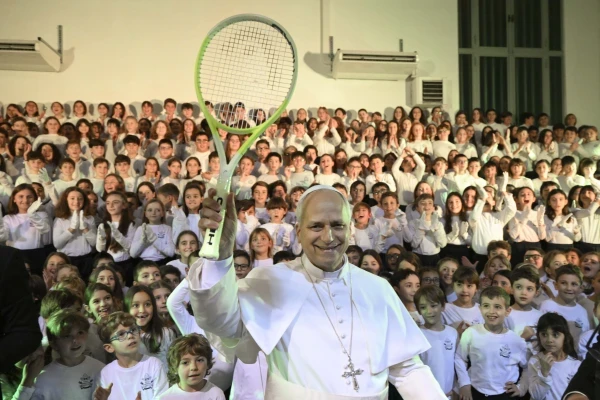 Pope Leo XIV holds up a tennis racket given to him by children of the Pope Paul VI Pontifical School in Castel Gandolfo on Dec. 16, 2025. / Credit: Vatican Media
Pope Leo XIV holds up a tennis racket given to him by children of the Pope Paul VI Pontifical School in Castel Gandolfo on Dec. 16, 2025. / Credit: Vatican Media
ACI Prensa Staff, Dec 18, 2025 / 18:08 pm (CNA).
Pope Leo XIV enjoyed a special Christmas concert this week dedicated to him by students of the Paul VI Pontifical School in Castel Gandolfo.
During his surprise visit to the school, which has about 300 students, the Holy Father listened attentively to the children and applauded enthusiastically at the end of their concert.

The pontiff delivered an impromptu greeting to the children, who sang Christmas carols in several languages for him. “It was wonderful to hear the Christmas carols in Italian, Latin, English, and Spanish,” he said at the end of the concert, as reported by Vatican News.
“Hearing these children sing like this in all these languages helps us understand how Christmas awakens in the hearts of all of us a joy, a peace, a truly important message,” he said.
The performance took place in the school gymnasium and was also attended by parents and teachers, as well as the bishop of Albano, Vincenzo Viva, and the president of the Administration of the Patrimony of the Apostolic See, Archbishop Giordano Piccinotti.

The pope thanked the school for the invitation and said the children “have brought love to everyone tonight with this beautiful music.”
As is his custom, he referred to St. Augustine, noting that the saint from Hippo said that “‘he who loves, sings,’ because his heart truly knows what is important.”
“And God has wanted to communicate to all of us the gift of love: This is Christmas, God who wanted to draw near to us, especially to the little ones. May this spirit that we are already celebrating tonight, and in the coming days and at Christmas, and perhaps throughout the entire year, allow us to feel and live this love of Christmas,” said the Holy Father, who concluded his brief address on Dec. 16 with an invitation to “proclaim peace, love, and unity in the world.”

Pope Leo XIV, who wore an enormous smile on his face, took a few moments to greet the children and their families. They gave him a tennis racket because he plays tennis, a sport he loves and has been playing for years.
Before returning to the Vatican after his weekly visit to the papal residence in Castel Gandolfo, the pope toured the grounds of the Catholic elementary school, which was founded in 1968 by St. Paul VI and houses a relic of the saint.
This story was first published by ACI Prensa, CNA’s Spanish-language news partner. It has been translated and adapted by CNA.
European Parliament backs abortion fund resolution amid Catholic criticism
Posted on 12/18/2025 19:04 PM (CNA Daily News - Europe)
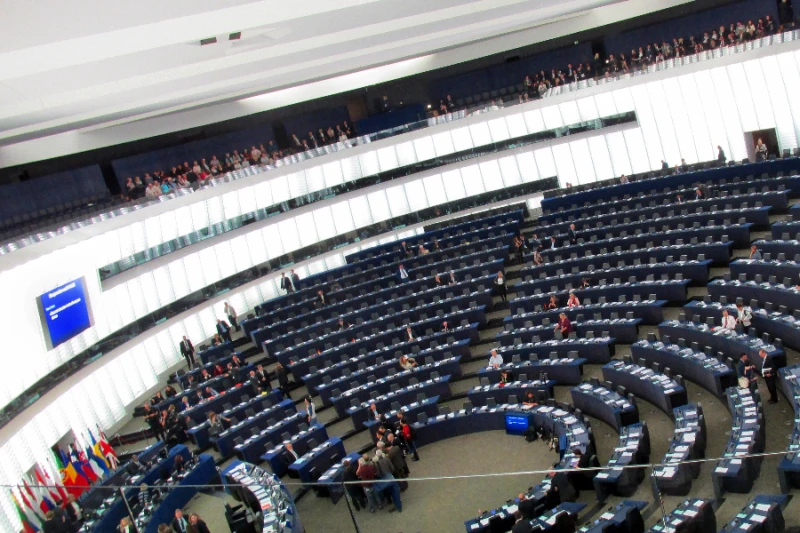 The European Parliament in Strasbourg, France. / Credit: fotogoocom via Wikimedia (CC BY 3.0)
The European Parliament in Strasbourg, France. / Credit: fotogoocom via Wikimedia (CC BY 3.0)
Vilnius, Lithuania, Dec 18, 2025 / 14:04 pm (CNA).
The European Parliament voted Dec. 17 in favor of a resolution supporting the creation of a new European Union fund intended to expand access to abortion services across member states, a move that exposed deep divisions among lawmakers and renewed debate over national sovereignty and abortion legislation in EU policymaking.
Members of the European Parliament meeting in Strasbourg voted 358 in favor, 202 against, with 79 abstentions. The proposal would establish a voluntary, opt-in financial mechanism to assist women who are unable to procure abortions in their home countries and who choose to travel to states with more permissive laws.
The initiative was brought forward under the EU’s European Citizens’ Initiative (ECI) framework by the campaign group My Voice, My Choice, which claims to represent a broad grassroots mobilization of European citizens.
Because the Dec. 17 vote concerned a nonbinding resolution rather than a legislative act, it carries no immediate legal effect. Nevertheless, supporters described the outcome as symbolically significant.
A nonbinding vote with an uncertain path forward
Despite parliamentary backing, the resolution does not compel the European Commission to act. Under ECI procedures, the commission is required to formally respond to the initiative within six months of its submission, by March 2026, outlining whether it intends to propose legislative or policy measures.
Even if the commission signals support, past experience suggests that endorsement does not always translate into concrete policy outcomes. Several previous citizen initiatives that met procedural thresholds ultimately stalled or were declined by the commission.
Opposition to the proposal was particularly strong among members from Hungary, where a majority of European Parliament members voted against the resolution. Polish representatives were nearly evenly split, with 23 voting in favor, 24 opposed, and one abstention. Delegations from Austria, Germany, Spain, Italy, France, and Lithuania also showed closely divided voting patterns, reflecting the ongoing cultural and political disagreement across Europe on abortion policy.
Critics of the pro-abortion proposal, including family advocacy groups, religious organizations, and lawmakers, argued that health care and medical practice remains a matter of national competence under EU treaties. They warned that creating a centralized funding mechanism for abortion risks circumventing national laws and democratic processes.
The vote came after the Commission of the Bishops’ Conferences of the European Union urged voters in the Parliament to pursue “prudent policies that genuinely protect and support women, while also safeguarding unborn human life.”
“A medical intervention [abortion] of such gravity and with such important ethical implications cannot and must not be normalized,” the bishops said.
Beyond the vote itself, My Voice, My Choice has drawn criticism for its public advocacy methods. Following a Nov. 13 European Parliament vote to include the campaign within the Gender Equality Strategy 2025, the group used social media to publish images of European Parliament members who voted against the inclusion.
The posts grouped lawmakers by country, displayed their social media handles, and encouraged members of the public to tag and convince them to support the initiative.
Some observers described the tactic as coercive or distasteful, while others, including some pro-life advocates, argued it inadvertently clarified to the public which politicians value the dignity of human life as they oppose abortion expansionism.
On Nov. 26, the European Centre for Law and Justice convened a conference in Brussels attended by pro-life members of the European Parliament, civil society leaders, and representatives of the Federation of Catholic Family Associations in Europe. Women shared personal testimonies related to abortion, and speakers addressed what they described as increasingly top-down advocacy strategies behind My Voice, My Choice.
During the conference, organizers presented a funding analysis examining the organizations supporting the campaign. According to the report, among the more than 250 organizations listed as supporters, a significant number receive funding from EU institutions and large American philanthropic foundations.
The report identified funding streams from organizations such as the Open Society Foundation, the Gates Foundation, the Ford Foundation, the MacArthur Foundation, and the David and Lucile Packard Foundation, as well as direct EU funding. Several prominent pro-abortion organizations across Europe were shown to have long-standing financial ties to these donors.
My Voice, My Choice’s principal organizer, Nika Kovač, a Slovenian anthropologist who heads the 8th of March Institute, is linked in the report as having her organization receive funding from the Open Society Foundation and support from the International Planned Parenthood Federation (IPPF).
Additionally, according to the report, IPPF’s European branch has received millions of euros in funding over the past two decades from the European Union and major U.S.-based foundations.
The report does not allege illegality but rather examines the democratic character of the initiative, specifically, whether the ECI mechanism in this case reflects organic citizen mobilization or functions primarily as a vehicle through which well-funded advocacy networks advance preexisting policy goals under the banner of popular participation.
Dublin Archdiocese dispels doubts, concerns about its financial position
Posted on 12/18/2025 11:00 AM (CNA Daily News - Europe)
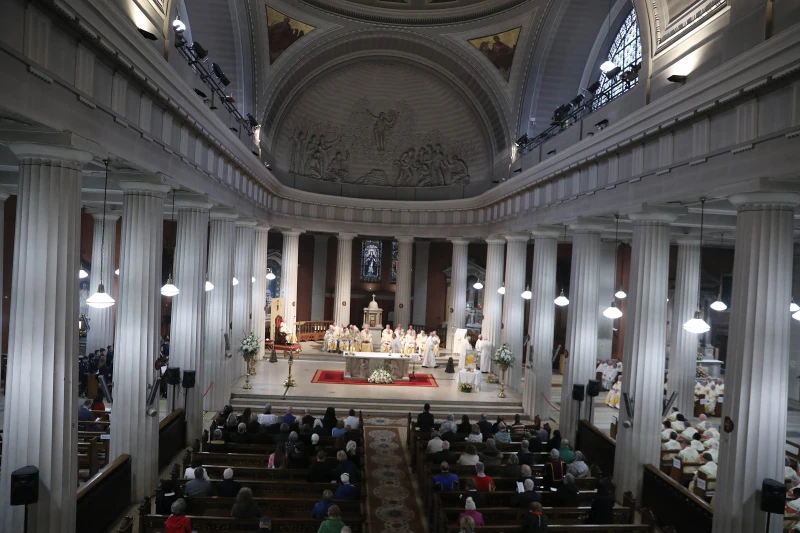 Catholic faithful gather on Friday, Nov. 14, 2025, in St. Mary’s Pro Cathedral in Dublin to celebrate two milestones: a decree from Pope Leo XIV formally designating St. Mary’s Pro Cathedral as the cathedral of the Archdiocese of Dublin and the cathedral’s bicentenary. / Credit: John McElroy/Dublin Archdiocese
Catholic faithful gather on Friday, Nov. 14, 2025, in St. Mary’s Pro Cathedral in Dublin to celebrate two milestones: a decree from Pope Leo XIV formally designating St. Mary’s Pro Cathedral as the cathedral of the Archdiocese of Dublin and the cathedral’s bicentenary. / Credit: John McElroy/Dublin Archdiocese
Dublin, Ireland, Dec 18, 2025 / 06:00 am (CNA).
The Archdiocese of Dublin has dispelled concerns about its financial position, pointing to its healthy reserves, strong financial position, and the strict regulatory framework within which it operates as a charity.
Following a report in one of Ireland’s most prominent mainstream media publications, the Irish Times, the Archdiocese of Dublin has moved to clarify questions raised about its financial security over the next 15 years.
The archdiocese explained to CNA the context of its 2024 financial statements, which were the subject of a recent Irish Times report that has raised concern among the faithful in Ireland’s largest diocese.
In the story titled “Dublin’s Catholic Archdiocese Faces Financial Woes as Priests Age and Mass Numbers Decline,” the Dublin-based newspaper stated that the archdiocese’s cash reserves will be exhausted by 2041. It also pointed to a worrying decline in vocations, with actuarial predictions of 70% fewer priests within 20 years. The archdiocese had no ordination in 2024 and just two since 2020.
Both statements reflect what is stated in the report but neglect to include the archdiocese’s contextual notes in its financial statements on the subject of its reserves, including the funds generated by the sale of Clonliffe College in north Dublin.
Ide Finnegan, the archdiocese finance administrator and head of operations, explained in response to CNA’s questions that its finances are governed by strict legislation relating to its charitable status.
“In the financial statements, context and measures planned to address these factors are also outlined. For example, every effort is being made to sustain and indeed increase income and manage costs. The diocese is investing in new staff rather than planning staff reductions,” Finnegan said.
The Irish Times article reported the total income from the archdiocese’s 188 parishes, which in 2024 came to 31 million euros ($36.5 million), compared with 31.1 million euros ($36.4 million) the previous year. Total expenditure in 2024 was 34.2 million euros ($40.2 million), the same as in 2023.
The first collections held at weekend Masses, which support priests, totaled 14.1 million euros ($16.6 million) in 2024, a decrease of 200,000 euros ($235,000) from 14.3 million euros ($16.8 million) in 2023. Share collections in support of parishes raised 5.7 million euros ($6.7 million) in 2024, 100,000 euros ($117,500) less than the 5.6 million euros ($6.6 million) in 2023.
The Irish Times report did not mention the fact noted in the financial statements that international fundraising firm CCS Consulting has been retained to advise and support fundraising strategies for the archdiocese.
Finnegan, referring to CCS, told CNA: “There is hope that the initiative will help with parish reserves. The diocesan balance sheet is very healthy, but it is important that this is protected by generating enough income to meet expenditure. The financial statements reflect all the steps being taken around financial sustainability, and we are currently implementing a strategic plan around this.”
Since COVID-19, there has been a shift in the number of Mass attendees and the amount donated in Sunday collections. It is also clear that the archdiocese is taking proactive steps to manage its financial position.
Parishes in the Dublin Archdiocese are responsible for their own financial management. Parish employees are directly employed by parishes, and any decisions on staffing levels are made locally.
Finnegan told CNA: “Parishes are encouraged to generate income, but as the accounts state, there are parishes that are running a financial deficit, and this will need to be monitored into the future. The Share fund provides financial support to disadvantaged parishes where local contributions can be lower.”
The archdiocese has begun implementing a new strategy, titled Building Hope, which includes priorities such as management, ministry, the role of laypersons, and finance.
The archdiocese is structured into five pastoral areas, within which are 15 deaneries nurturing 53 partnerships of parishes.
Altogether, the Catholic population recorded in the 2022 census was 996,000 out of a total population of approximately 1.6 million.
In offering reassurance and confidence in the archdiocese’s position, Finnegan highlighted one key section of the financial statements that provides essential context for any concerns about the potential depletion of reserves by 2041.
“While it is unlikely that all the identified risks will materialize simultaneously, the trustees must ensure adequate reserves are available to address potential challenges. The primary risk lies in the charity’s ability to successfully navigate these issues, which vary in severity and impact. The trustees are committed to maintaining a present level of unrestricted and designated preserves, enabling the charity to remain resilient in the face of both anticipated and unforeseen challenges.”
First painting in Rome of Our Lady of Guadalupe preserved in fourth-century church
Posted on 12/17/2025 22:30 PM (CNA Daily News - Europe)
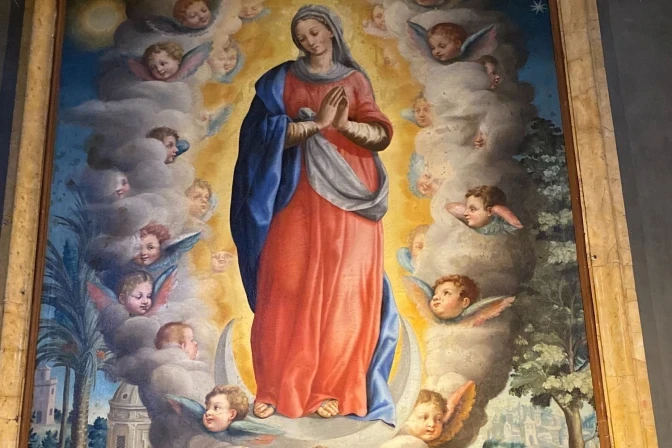 This image is preserved in the Church of San Vital, built in 386, in Rome. / Credit: Victoria Cardiel/EWTN News
This image is preserved in the Church of San Vital, built in 386, in Rome. / Credit: Victoria Cardiel/EWTN News
Rome Newsroom, Dec 17, 2025 / 17:30 pm (CNA).
The Church of St. Vitale, built in 386, is the oldest Christian church still standing in the center of Rome. It is the “only place of worship from the fourth century that has remained intact throughout the centuries,” emphasized its parish priest, Father Elio Lops.
This early Christian church, discreet and given little attention on typical tourist routes, safeguards an artistic and devotional treasure that is practically unknown: the first image of Our Lady of Guadalupe painted in the Italian capital.
“It has never been given the importance it deserves,” Lops told ACI Prensa, CNA’s Spanish-language news partner, referring to a representation of the Virgin Mary that immediately brings to mind the image imprinted on St. Juan Diego’s tilma in 1531.
The similarities are striking. “There is no doubt about its identity,” the parish priest pointed out.
Although the position of the hands shows a slight variation and the rays that usually surround the figure are missing, “the gaze is the same,” he explained. The painting also retains “the same belt that symbolizes Our Lady’s maternity and the large crescent moon beneath her feet,” Lops noted, citing the essential iconographic elements of the Guadalupe narrative.
The image was painted “around the year 1550” by the Jesuit Giovanni Battista Fiammeri, an artist active in Rome who, on the occasion of the Jubilee of 1600, decorated the entire church of St. Vitale.
A compelling hypothesis about the painting’s origin
Although there are no documents that conclusively certify it, the parish priest supports a compelling hypothesis: The Jesuit Fiammeri painted the picture based on a sketch of the miracle made by Spanish missionaries upon their return to Rome, after learning about the events that occurred on Tepeyac Hill two decades earlier.
One detail reinforces this interpretation. At the bottom of the painting, “below the Virgin, there is a small caravel depicting the ship on which they traveled to Mexico,” the priest explained. This is an unusual element in later iconography of Our Lady of Guadalupe, but it was commonly used in the context of the first contacts between the New World and the Holy See.
Whatever the precise origin of the model used by Fiammeri, it is certain that this image predates by several decades the other representations of the Virgin of Guadalupe preserved in Rome, which date from the mid-17th century, almost a hundred years after the apparitions, the 500th anniversary of which will be celebrated in 2031.
This fact confers on the painting in St. Vitale a singular value as a testament to the early European reception of a devotion that, over time, would become one of the pillars of the Americas’ religious identity.
This story was first published by ACI Prensa, CNA’s Spanish-language news partner. It has been translated and adapted by CNA.
Christian religious education in Northern Ireland ruled unlawful; bishops respond
Posted on 12/17/2025 11:00 AM (CNA Daily News - Europe)
 Schoolchildren attend a ceremonial welcome and tree planting at Aras an Uachtarain, the official residence of the president of Ireland, during a state visit by His Serene Highness Prince Albert II of Monaco and his fiancee, Charlene Wittstock, on April 4, 2011, in Dublin. / Credit: Gareth Cattermole/Getty Images
Schoolchildren attend a ceremonial welcome and tree planting at Aras an Uachtarain, the official residence of the president of Ireland, during a state visit by His Serene Highness Prince Albert II of Monaco and his fiancee, Charlene Wittstock, on April 4, 2011, in Dublin. / Credit: Gareth Cattermole/Getty Images
Dublin, Ireland, Dec 17, 2025 / 06:00 am (CNA).
A U.K. Supreme Court ruling has found that Christian religious education taught in schools in Northern Ireland is unlawful.
In its judgment, the court found that the current approach lacks an “objective, critical, and pluralistic” framework and leans more toward indoctrination than fostering a diverse understanding of beliefs.
Responding to the ruling, which does not apply to Catholic schools, Bishop Alan McGuckian, SJ, of the Down and Connor Diocese firmly challenged the idea that Christianity should be given no priority in all schools, stating that anyone seeking to do so is “cutting off their nose to spite their face.”
The landmark ruling follows a case brought by an unnamed father and his daughter who attended a non-Catholic state-controlled primary school in Belfast. The girl received nondenominational Christian religious education and took part in Christian worship.
The Supreme Court ruling upheld the earlier 2022 high court judgment that “the teaching of religious education under the core syllabus and the arrangements for collective worship in the primary school attended by the child breached her and her father’s rights under European human rights legislation.”
One of the issues referenced in the ruling was the child saying grace before meals at home. This, she told her nonreligious parents, was what they did at school.
The ruling raises critical questions about how religious teachings are delivered in schools and the implications for students’ broader educational experiences.
In the Northern Ireland system, Catholic schools are governed differently from state schools. The Supreme Court judgment clearly states that denominational religious education and collective worship are not prohibited in Catholic-maintained schools.
McGuckian pointed out that the legislative significance of the ruling will in due course have implications for the development of the religious education core syllabus and wider engagement with religious practice and ethos within all of Northern Ireland’s schools.
While noting the Catholic exemption, McGuckian said: “Many people have asked me, while it is explicitly noted in the judgment that this ruling applies to a controlled grant-aided primary school and does not apply to Catholic schools, what difference is this Supreme Court ruling going to make to the provision of religious education across NI schools more widely? Is religion being driven out of schools? More specifically, some are asking, ‘Is Christianity being driven out of schools?’”
McGuckian noted: “I want to challenge the principle that people of a secular mindset assert, namely that Christianity should be given no priority in all schools. That principle is simply ungrounded, unreasonable, and illogical.”
“Christianity and the Judeo-Christian worldview provides the value-based foundation for all that is good in Western society and is deeply embedded within human rights legislation. The idea of the rights of the individual to be free from coercion, all the freedoms contained in the various charters of human rights, are based on and stem from the biblical teaching that every single person is created in the image and likeness of God.”
He continued: “Enlightenment thinkers of a more secular viewpoint have built on that ‘fundamentum,’ and, in many ways, they have served us well, but they grounded and built their insights on underlying Christian values that protect the dignity of every human person.”
“Those who seek to have Christianity sidelined in our shared society are cutting off their noses to spite their face,” he said.
McGuckian added that world religions should also be respected, and they also have a contribution to make in an increasingly diverse multicultural and multi-faith society. He continued: “However, it should be recognized that Christianity, centrally and uniquely, has provided the framework of values that underpin Western society.”
“In schools across the Western world, Christianity should, indeed, be given priority in our educational systems and everybody, including those of other faiths and none, should recognize and welcome this because of its foundational importance.”
While the ruling does not apply to worship and prayer in Catholic schools, it will impact and influence the religious education curriculum taught in schools, which is determined by school education authorities. The current curriculum has been in place since 2007, and its content was determined by the four main churches in Northern Ireland, which include Catholicism.
Speaking to the BBC, the Catholic bishop of Derry, Donal McKeown, said he is positive about the need for a new religious education core curriculum and is quite open to where this goes.
“I’m looking forward to the next stage of the journey, I don’t see it as a negative thing,” he said. “There are many points to be clarified — this is an opportunity for all of us to be involved in renewing the [religious education] curriculum to enable us to create a healthy, forward-looking society.”
Why religion matters at the EU-Balkans summit today
Posted on 12/17/2025 09:00 AM (CNA Daily News - Europe)
 The European Parliament building in Brussels, Belgium. / Credit: Ala z via Wikimedia (CC BY-SA 3.0)
The European Parliament building in Brussels, Belgium. / Credit: Ala z via Wikimedia (CC BY-SA 3.0)
EWTN News, Dec 17, 2025 / 04:00 am (CNA).
In a strongly secular European Union, the Balkans’ complex religious reality plays an important role as officials and diplomats gather on Wednesday to discuss the membership plans for six nations.
The EU-Western Balkans summit on Dec. 17 brings together European Union representatives and their counterparts from six Western Balkan nations: Albania, Bosnia and Herzegovina, Kosovo, Montenegro, North Macedonia, and Serbia.
As officials discuss EU enlargement and current challenges, religious leaders and analysts underscore that the churches — deeply woven into the region’s national identities, geopolitics, and social fabric — will be crucial to the success of both European integration and regional stability.
The EU considers itself the main trading partner, investor, and donor for the Western Balkans and provides substantial assistance and financial support to the region. However, the religious landscape — marked by Orthodox majorities, significant Muslim populations, and Catholic minorities — reflects complex historical, ethnic, and political tensions that shape the region’s future.
“We hope that the trend of the enlargement is still serious and that it will be confirmed,” Serbia’s ambassador to the Holy See, Sima Avramović, told CNA.
Currently, there is a concern about “Russian influence, especially in Serbia, so the EU will try to discuss how to stabilize this area,” Lucio Caracciolo, founder and director of the Italian geopolitical magazine Limes, said in a conversation with CNA. At the same time, he warned of “the lack of the political will and funds to support” these countries before they are accepted to the 27-member EU.
Religious landscape
There are many ethnic groups and three main religious communities in the Western Balkans: Orthodox, Muslim, and Catholic. Albania and Kosovo are mostly Muslim, with the latter at more than 90%. Half of Bosnia and Herzegovina is Muslim. Almost three-quarters of the population in Montenegro belong to the Orthodox Church.
On the contrary, around half of the population in North Macedonia is Orthodox, followed by Muslims and other Christians. The biggest country in terms of inhabitants and area is Serbia, with more than 80% Orthodox believers, followed by other minorities.
The “Religious Freedom in the World Report 2025” by the pontifical foundation Aid to the Church in Need (ACN) appreciated positive prospects for religious freedom in Albania and North Macedonia. It sees mostly difficulties in others; for instance, “the promotion and protection of religious freedom in Kosovo is fragile,” whereas in Montenegro, “persistent ethno-religious tensions typical of the Balkans are felt,” but ACN recognized efforts made to overcome them.
While Albania was an isolationist communist nation, the other Balkan states were part of the more liberal communist country of Yugoslavia. After the federation’s collapse in 1991, Slovenia and Croatia proceeded toward European integration, becoming EU and NATO members.
Relations among the churches and religions
The Orthodox churches are important in the countries where they represent a majority religion also for their role “in the nation-building process and in the consolidation of the local nation-states,” expert on Orthodox Christianity Daniela Kalkandjieva from the Sofia University of St. Kliment Ohridski in Bulgaria told CNA.
At times, they are unable “to exert significant influence on their local society.”
Recently, the Orthodox churches have diverged in opinions “to such political and socio-economic challenges as the refugee crisis, the anti-COVID vaccination, and the Russian invasion of Ukraine,” she explained.
The spread of the “Russian World” concept and “holy war” are “new challenges to the very ethos of Eastern Orthodoxy as a Christian denomination and provoked tensions and disunity among the adherents of this religious tradition.”
On this note, Caracciolo said that some of these churches are “certainly connected to some powers in Russia and also in the Balkans, which are often in conflict with each other.”
However, the secretary of the Holy Synod of the Macedonian Orthodox Church — Archdiocese of Ohrid (MOC-AO), Bishop Kliment, said that they “cultivate sisterly relations” with the churches of “closest neighboring peoples.”
In a statement sent to CNA, the bishop emphasized that we “build bridges of trust among us, prioritizing solidarity and unity in faith” through Eucharistic communion, mutual visits and joint services, cooperation in education, and the like.
Catholic-Orthodox relations are also complex. Though “there is always a room for more cooperation,” with Catholics, there are “good relations, mutual support, and understanding.” He mentioned the traditional annual meeting held for more than half a century in Rome in honor of Sts. Cyril and Methodius and Pope Francis’ visit to North Macedonia in 2019.
Whereas some Orthodox churches collaborate and pray with Catholic representatives, “others find such interactions incompatible with the Orthodox doctrine and maintain mostly diplomatic relations with the Holy See,” explained Kalkandjieva, who also lectures at the Pontifical Oriental Institute in Rome.
Along the same line, Avramović underscored that the religious leaders in Serbia “meet on different occasions and discuss important social, religious, and other significant issues.”
There are seven traditional churches and religious communities in his homeland, including the Slovak Evangelical Church, the Jewish community, and the Muslim community.
View of the EU
When it comes to the EU, the local Orthodox churches perceive the Union “as an important factor in the lives of their believers” and some have representation offices in Brussels, where many EU institutions are based. Nonetheless, this official dialogue and collaboration are little known in their home countries, Kalkandjieva stressed.
The MOC-AO, which represents the largest religious institution and community in North Macedonia, respects the will of the majority of its citizens and its faithful, who support European integration, Kliment underscored. We “attentively follow the complex internal challenges of the EU,” he added. The Orthodox bishop underlined that it should be “a platform for political and economic stability, fully respecting religious freedoms and the rule of law.”
A few months ago, Croatian Member of the European Parliament Tonino Picula caused a controversy as he posted an old picture of himself on X, posing with a gun commemorating Operation Storm. It occurred in 1995 as Croatia took control of what it considered the occupied territories in the south, which was a self-proclaimed republic. As the Croatian army came, thousands of Serbs fled to Serbia.
The social media post sparked backlash not only from Serbia but also from European politicians who called Picula’s statement disturbing and highly politically dangerous.
Miracle of the liquefaction of blood of St. Januarius is repeated in Naples, Italy
Posted on 12/16/2025 17:58 PM (CNA Daily News - Europe)
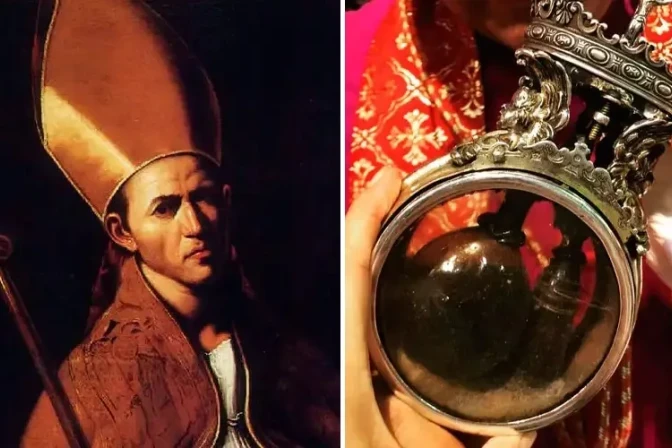 St. Januarius (left) and the relic of the blood of St. Januarius. / Credit: Chapel of St. Januarius
St. Januarius (left) and the relic of the blood of St. Januarius. / Credit: Chapel of St. Januarius
ACI Prensa Staff, Dec 16, 2025 / 12:58 pm (CNA).
The miracle of the liquefaction of the blood of St. Januarius, patron saint of the Italian city of Naples, occurred again on Tuesday, Dec. 16.
According to the Archdiocese of Naples, the miracle took place after Mass in the Royal Chapel of the Treasure of St. Januarius on the feast of the patronage of St. Januarius.
“At 9:13 a.m. local time, the blood already appeared semi-liquid. At 10:05 a.m., the complete liquefaction was announced,” the archdiocese reported.
“Dec. 16 is the third of three annual celebrations in honor of the martyred saint. This date commemorates the eruption of Mount Vesuvius in 1631, when the Neapolitans requested and obtained the miraculous intervention of St. Januarius to prevent the lava from engulfing the city,” he explained.
The announcement of the miracle was made by Monsignor Vincenzo De Gregorio, abbot of the Chapel of the Treasure of St. Januarius. The phial, once the miracle had occurred, was carried in procession to the chapel so that all those present could see it.
The miracle usually occurs on two other days of the year: every Sept. 19 (the anniversary of St. Januarius’ martyrdom) and the Saturday before the first Sunday of May (in remembrance of the transfer of his remains to Naples).
When the blood does not liquefy, as happened on Dec. 16, 2020, the inhabitants of Naples usually take it as a bad omen. However, in the face of this possibility, the Church encourages the faithful not to lose sight of what is essential.
On Sept. 19, 2024 — despite the miracle having occurred that day — the archbishop of Naples, Cardinal Domenico Battaglia, urged the faithful not to place their hope in physical manifestations but in Jesus, who calls us to care for the most vulnerable.
“I implore you, we should not worry about whether the blood of this relic liquefies or not, but rather we should worry about whether the blood of the dispossessed, the marginalized, the least fortunate, and the innocent is flowing in our streets and in our world,” the cardinal said.
“The blood of Bishop Januarius, let us never forget, always points to the blood of Christ, both the blood of Christ himself and the blood of the poor and the least fortunate in whom Christ lives,” he added.
This story was first published by ACI Prensa, CNA’s Spanish-language news partner. It has been translated and adapted by CNA.
EU funding freeze causes financial problems for Catholic family association
Posted on 12/16/2025 16:30 PM (CNA Daily News - Europe)
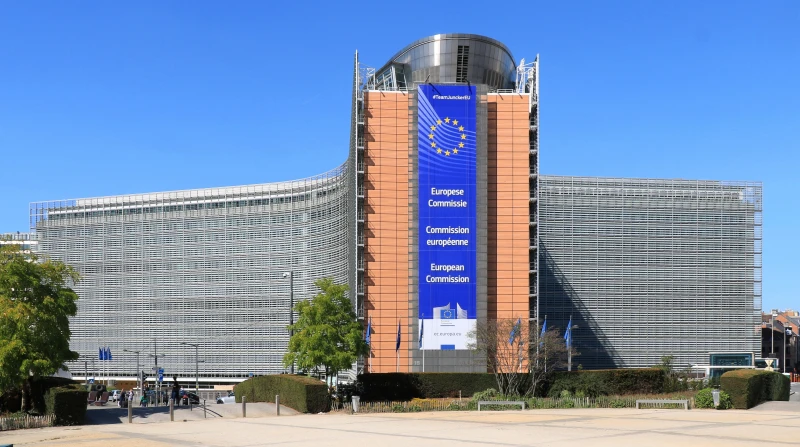 The Berlaymont building in Brussels, seat of the European Commission. / Credit: EmDee/Wikimedia (CC BY-SA 4.0)
The Berlaymont building in Brussels, seat of the European Commission. / Credit: EmDee/Wikimedia (CC BY-SA 4.0)
EWTN News, Dec 16, 2025 / 11:30 am (CNA).
A drastic cut in EU funding has plunged the Federation of Catholic Family Associations in Europe (FAFCE) into financial crisis, according to the association, sparking accusations of “ideological discrimination” against the Brussels-based group.
FAFCE announced that the European Commission excluded all six of its recent project applications from funding, reportedly penalizing the Catholic group’s proposals for lacking sufficient “gender diversity” and “safeguards against discrimination,” according to documents reviewed by CNA.
Responding on social media, Hungarian Member of the European Parliament Kinga Gál, vice president of the Patriots for Europe group, condemned the European Commission’s decision as “the highest form of discrimination.”
She argued that the move targets the Catholic association “simply for defending family as the fundamental unit of society. In Brussels, that is now treated as unacceptable.”
“Strong families make strong communities. Strong communities make strong nations. We cannot allow Brussels to erase this core value in the name of gender ideology,” the European Member of Parliament wrote.
‘European values’
Founded in 1997 and based in Brussels, FAFCE is considered to be the only family nongovernmental organization (NGO) at the EU level that explicitly includes “Catholic” in its official name.
FAFCE represents 33 member organizations from 21 countries and bases its work on Catholic social teaching.
The cut in funding falls under two major EU programs: Erasmus+ and CERV (Citizens, Equality, Rights, and Values), which support civil society, education, and organizations that promote EU values.
The commission’s evaluation feedback cited “limited information on gender inequalities” in FAFCE’s proposals, claiming this deficit “may limit the depth of gender analysis.”
The evaluation also stated that “the approach may contravene EU equality provisions” and noted “limited safeguards against discrimination or victimization,” though the commission did not provide specific evidence for these assertions.
The rejected projects focused on child protection and youth welfare, including initiatives to prevent children’s access to pornography and combat loneliness among young people.
Two members of the European Parliament have tabled written questions to the European Commission regarding the funding decisions: Paolo Borchia and Gál, seeking assurance of equal treatment for all NGOs applying for EU grants.
CNA reached out to the European Commission for comment but did not receive a response by the time of publication.
Financial impact
The funding freeze has created severe financial strain for FAFCE. In a fundraising newsletter, FAFCE President Vincenzo Bassi stated that the organization needs 150,000 euros (approximately $157,000) to continue its current projects. Without this funding, FAFCE will be forced to dismiss employees and reduce its presence at the European Union level in 2026.
“I consider this as ideological discrimination,” Bassi wrote. “How can a federation of associations whose primary mission is the promotion of the family be excluded from EU-funded projects such as CERV or Erasmus+?”
Bassi emphasized that FAFCE has “consistently promoted dialogue and upheld the dignity of each person” and argued that “the richness of European civil society is its pluralism, a principle enshrined in art. 2 of the Treaty on the European Union.”
“No organization should ever be penalized for defending a legitimate position in the public square,” he stated.
50 young French martyrs murdered by Nazis beatified in Notre Dame Cathedral
Posted on 12/16/2025 15:00 PM (CNA Daily News - Europe)
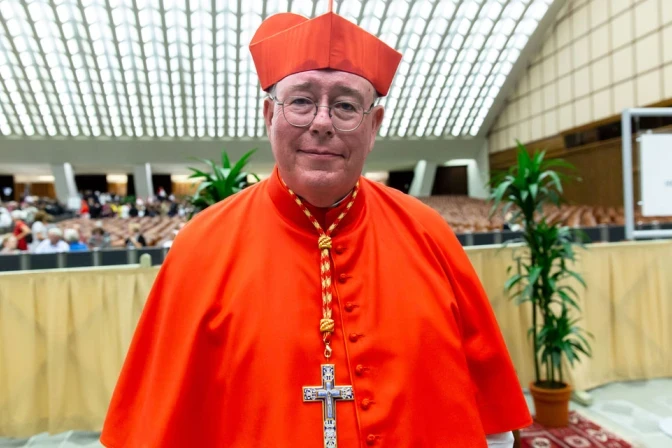 Cardinal Jean-Claude Hollerich, archbishop of Luxembourg, presided over the beatification Mass of the 50 martyrs of the Catholic apostolate, held Dec. 13, 2025, at Notre Dame Cathedral in Paris. / Credit: Daniel Ibáñez/EWTN News
Cardinal Jean-Claude Hollerich, archbishop of Luxembourg, presided over the beatification Mass of the 50 martyrs of the Catholic apostolate, held Dec. 13, 2025, at Notre Dame Cathedral in Paris. / Credit: Daniel Ibáñez/EWTN News
ACI Prensa Staff, Dec 16, 2025 / 10:00 am (CNA).
Cardinal Jean-Claude Hollerich, archbishop of Luxembourg, celebrated in Notre Dame Cathedral in Paris on Dec. 13 the Mass of beatification for 50 young martyrs who were murdered by the Nazis out of hatred for the Catholic faith during World War II.
In an apostolic letter he sent to the French capital, Pope Leo XIV established that the feast day of the 50 new blessed martyrs, belonging to about 30 French dioceses, will be May 5, 2026.
“Raymond Cayré, priest; Gérard-Martin Cendrier, of the Order of Friars Minor; Roger Vallé, seminarian; Jean Mestre, layman; and 46 companions were beatified in Paris. They were killed in hatred of the faith in 1944-45 during the Nazi occupation,” Pope Leo XIV said after the Angelus on the third Sunday of Advent (Gaudete Sunday).
“Let us praise the Lord for these martyrs, courageous witnesses to the Gospel, persecuted and killed for remaining close to their people and faithful to the Church!” the Holy Father said, recalling that on Dec. 13, 124 martyrs were also beatified in Spain.
Light in the midst of the ‘dark century of terrible carnage’
“The first half of the 20th century will go down in European history as the dark century of terrible carnage. To the victims of the two world wars, the soldiers, are added the victims of the Nazi dictatorship. But in this darkness, there are points of light, and even now we can identify names and faces associated with some of these points of light,” Hollerich said in his homily, as reported by the Archdiocese of Paris.
“They had an immense love for God, for Christ. This love compelled them to serve their brothers and sisters who had been sent to forced labor in Germany. Indeed, there can be no love of God without love of one’s neighbor,” the Jesuit cardinal continued, referring to the more than 1 million French people sent to Nazi factories and labor camps.
The new blesseds, the archbishop continued, were “these young Catholics — priests, religious, seminarians, Catholic Action activists, and Scouts — all answered the call of Cardinal [Emmanuel Célestin] Suhard [then-archbishop of Paris] and Father Jean Rodhain.”
“Most of them were between 20 and 35 years old, and, along with so many other anonymous apostles, they understood the spiritual and moral distress of 1.5 million young French workers deported to Germany, now without any religious guidance, since German priests were forbidden to minister to them,” Hollerich noted.
“They were truly ‘Martyrs of the Apostolate.’ Their lives and their work in the service of their brothers and sisters were a trial crowned by the sacrifice of martyrdom,” he emphasized.
With their service of love and mercy, the cardinal continued, these martyrs “in the hell of the concentration camps, succeeded in creating oases of paradise, where love managed to restore courage, heal the wounds of the heart, overcome indifference, and convey serenity and peace.”
One of them, the young Scout Joël Anglès d’Auriac, who was beheaded at the age of 22 on Dec. 6, 1944, after going to confession, receiving Communion, and praying the rosary, told the prison chaplain: “I am completely at peace ... for I am going to Jesus Christ.”
Another young man, Jean Mestre, decided against requesting an exemption from the Nazi’s Compulsory Labor Service for the war effort in Germany and told his mother of his decision in this way: “I love you with all my heart, but I love Jesus Christ even more than you, and I feel that he is calling me to be his witness to my fellow workers who are going through difficult times. Forgive me if I am hurting you.”
A message for young people today
Hollerich said that all these martyrs remind us that “whatever our vocation, our profession, or our responsibilities, we are committed, as disciples of Christ, to serving our brothers and sisters wherever God, in his providence, has placed us.”
“The Nazis, on the other hand, despised religious freedom. While forced to respect it in Germany, they revealed their true nature in the occupied territories. The love of our martyrs for Christ and for the people they helped made them martyrs for religious freedom,” he continued.
“Perhaps this point will be an important testimony for us regarding the future of the Church in Europe. Faith is never a private matter; it must find expression in concrete service to our sisters and brothers,” the Jesuit cardinal emphasized.
“Following in the footsteps of our martyrs, let us strive to be faithful disciples of Christ, the Prince of Peace, and let us ask those whom we celebrate today to obtain for us the grace to live our faith,” he said.
Prayer for the canonization of the new blesseds
At the conclusion of the Mass, those present were given a prayer card with a prayer approved by the archbishop of Paris, Laurent Ulrich, to ask the Lord for the intercession of the new blesseds and for their canonization:
Lord our God,
You granted to the blessed martyrs of the Catholic apostolate
To be inspired by the ardent desire to accompany and serve their brothers
who were conscripted for Compulsory Labor Service in Germany.
Rather than saving their lives, they answered your call
and chose to imitate Christ, who became a servant,
even to the point of following him in the sacrifice of the Cross.
Deign, O Lord, to glorify our blessed martyrs
and grant me, through their intercession,
the grace [state the grace requested] that I implore with confidence,
through Jesus Christ Our Lord. Amen.
Note: People who receive graces through the intercession of the blessed martyrs are invited to write to the postulator of their cause, Father Bernard Ardura, at Viale Giotto, 27, 00153 Rome – Italy.
This story was first published by ACI Prensa, CNA’s Spanish-language news partner. It has been translated and adapted by CNA.